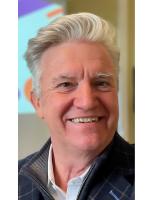

Event Information
1. Opening Activity: Hands-On Instant Challenge (15 minutes)
Content:
• Introduce the session with an instant challenge where participants collaborate to solve a hands-on challenge under time constraints. The challenge will involve creating a structure using limited materials to simulate a project-based task requiring creative, divergent problem solving.
Engagement:
• Participants will work individually to complete the challenge, immediately engaging them in a creative problem-solving task similar to what their learners might experience.
Process:
• Hands-On Activity: Participants engage in problem-solving, sparking curiosity and setting the tone for the rest of the session.
• Debrief: After the challenge, a brief discussion will highlight how the exercise taps into an intrinsic to design and innovate, serve as a foundation for understanding the creative process and a need for a definition of creativity.
2. Definition of Creativity (10 minutes)
Content:
• Define creativity and break it down into five understandable components.
Engagement:
• Ask the participants to share their understanding or experience of creativity in their classrooms or workspaces.
Process:
• Peer-to-Peer Sharing: Participants share examples of how the definition was or was not displayed in the opening instant challenge, encouraging reflective discussion.
3. Pedagogical Components (10 minutes)
Content:
• Introduce the key components of pedagogy for growing innovative thinking:
Engagement:
• Case Study: Use instant challenge as an example of the pedagogy in action.
Process:
• Small Group Discussion: Have participants reflect on how they might apply these principles in their current learning environments while identifying the more difficult ones to model for learners.
4. The Creative Process (10 minutes)
Content:
• Overview: Introduce the creative process, emphasizing its non-linear nature and how it integrates 21st-century skills and collaborative problem-solving.
Engagement:
• Interactive Q&A: Throughout the discussion, encourage questions and insights as participants relate the creative process to their own experiences with the instant challenge.
Process:
• Think-Pair-Share: Encourage participants to share how they might apply the creative process in their current work roles as educators and collaborate with peers.
5. Closing Activity: Hands-On Instant Challenge (15 minutes)
Content:
• The session concludes with another instant challenge. Participants must use limited materials to design and build a structure in a short amount of time. This challenge serves as a metaphor for using creativity, the creative process and the pedagogy in real-world situations.
Engagement:
• Participants will work in small teams, reinforcing the aspects and elements discussed in the presentation.
Process:
• Hands-On Activity: Direct engagement in the creative process through a timed challenge.
• Debrief: After the challenge, reflect on the combination of creativity (as defined), the pedagogical principles and the creative process and how they impacted the concluding instant challenge.
Here’s a list of recommended resources that support the importance of the session topic on pedagogy that highlights project-based learning, the creative process, and related principles.
Articles and Journals:
1. "Creative Problem Solving: A Process for Creativity"
Treffinger, D. J., Isaksen, S. G., & Stead-Dorval, K. B. (2006).
This article outlines structured creative problem-solving processes, which align with Destination Imagination's approach to teaching creativity and innovation.
2. "The Role of Curiosity in the Creative Process"
Kashdan, T. B., & Silvia, P. J. (2009).
This journal article emphasizes how curiosity stimulates the creative process, directly supporting the session's theme of sparking curiosity in learners.
3. "Learning by Doing: Creative Learning in Education"
Hofmann, M. (2021).
Published in Education Today, this paper explores how hands-on, project-based learning experiences foster creativity and critical thinking in students.
Websites and Online Resources:
1. Destination Imagination Official Website
https://www.destinationimagination.org
This site provides detailed information on DI pedagogy, creative challenges, and the benefits of student-driven, inquiry-based learning.
2. The Center for Creative Leadership
https://www.ccl.org
CCL offers research and training on creative leadership and problem-solving, supporting the importance of fostering creativity in educational settings.
3. Edutopia – Project-Based Learning
https://www.edutopia.org/project-based-learning
Edutopia is a trusted resource for educational innovation and frequently highlights the impact of project-based and experiential learning, which ties directly to the creative practices explored in the session.
Recognized Experts:
1. Sir Ken Robinson
Widely recognized for his work on creativity in education, Sir Ken Robinson’s TED talk, “Do Schools Kill Creativity?” and his book "Out of Our Minds: Learning to Be Creative," offer valuable insights into fostering creativity in learning environments.
2. David Kelley
Founder of IDEO and a thought leader in creative innovation, Kelley’s work emphasizes the importance of design thinking, which is closely related to the principles taught in the creative process.
3. Edward de Bono
A leading expert in lateral thinking, de Bono’s work underpins much of the theory behind creativity as a structured process, particularly in problem-solving scenarios akin to challenges explored in this presentation.
These resources support the session's focus on nurturing creativity, inquiry-based learning, and hands-on educational methods.
